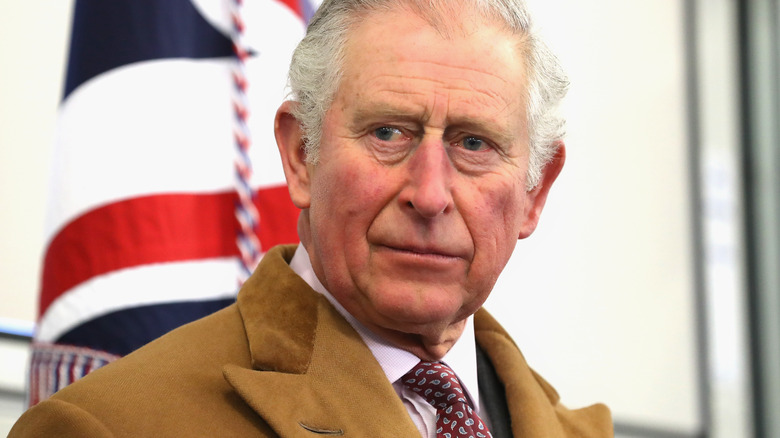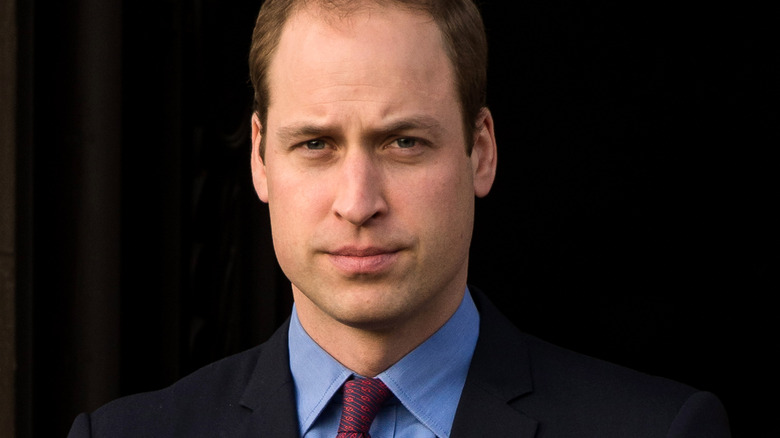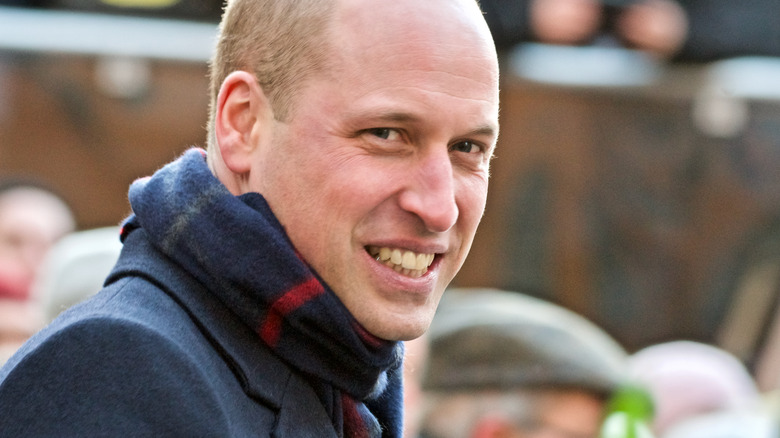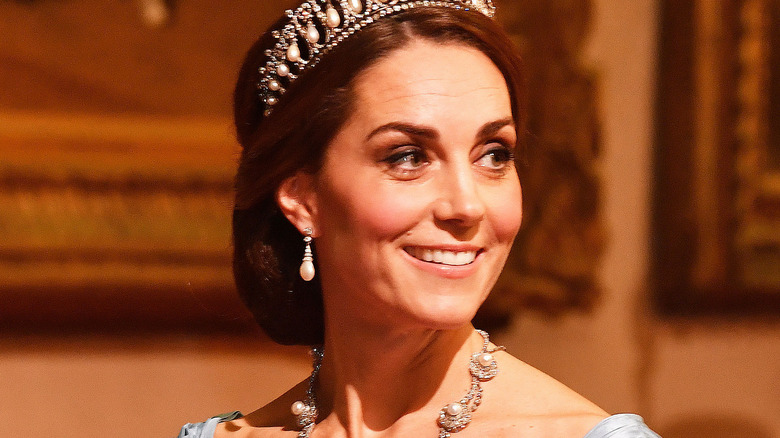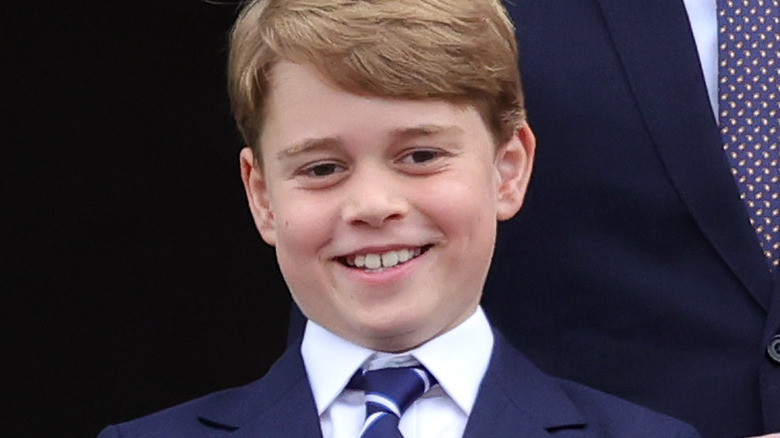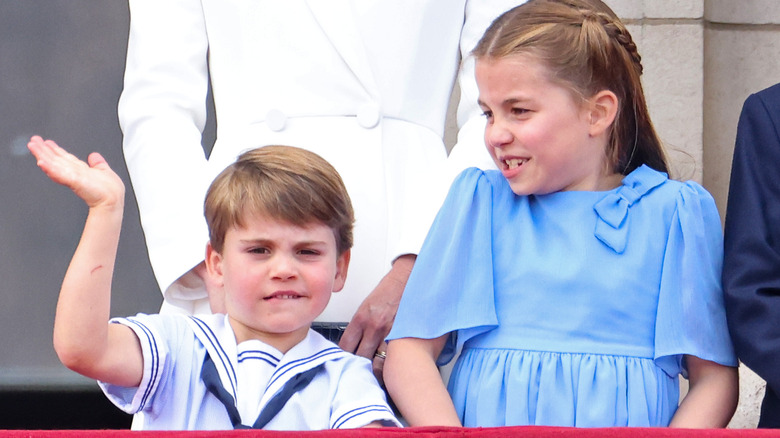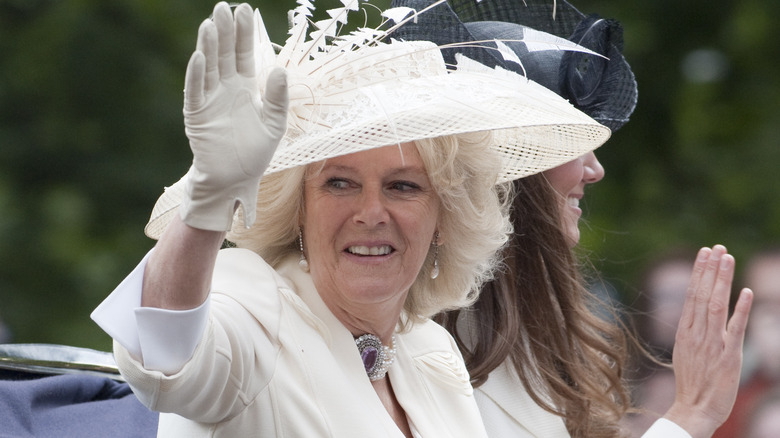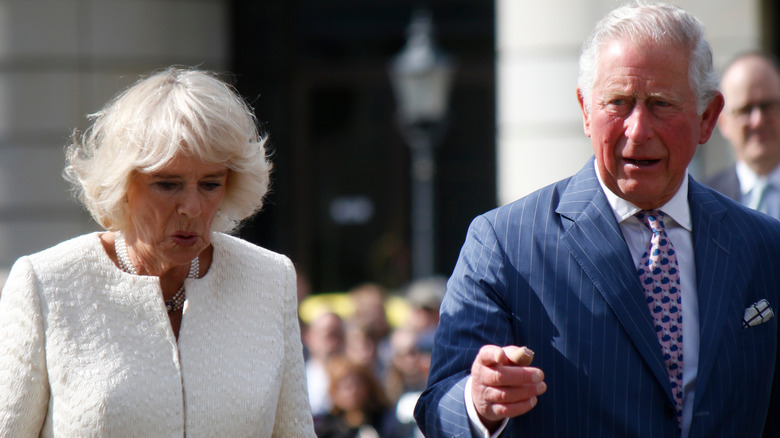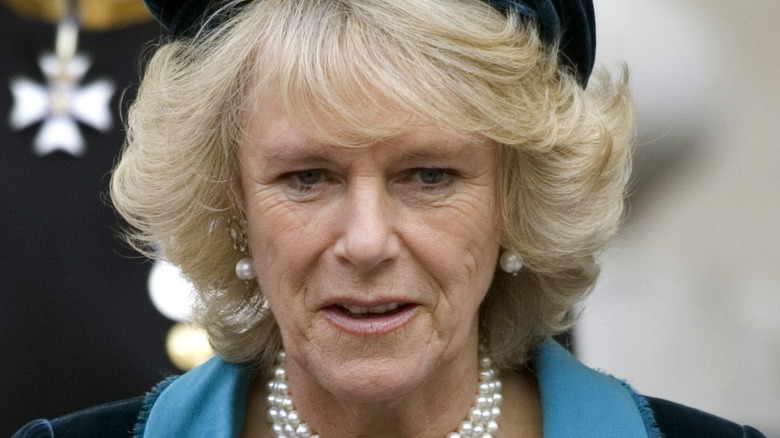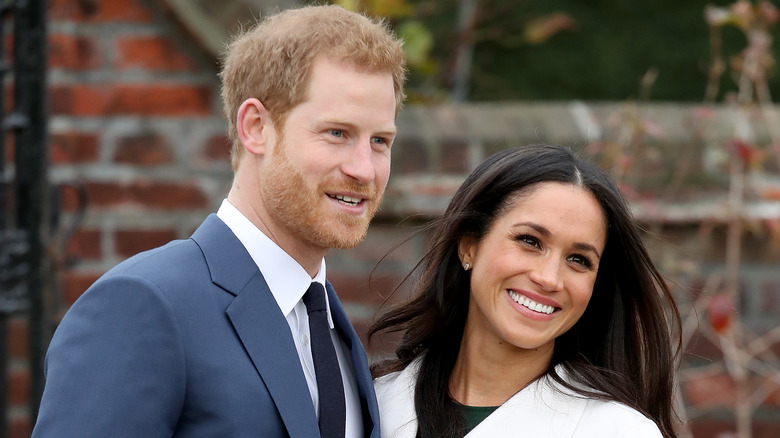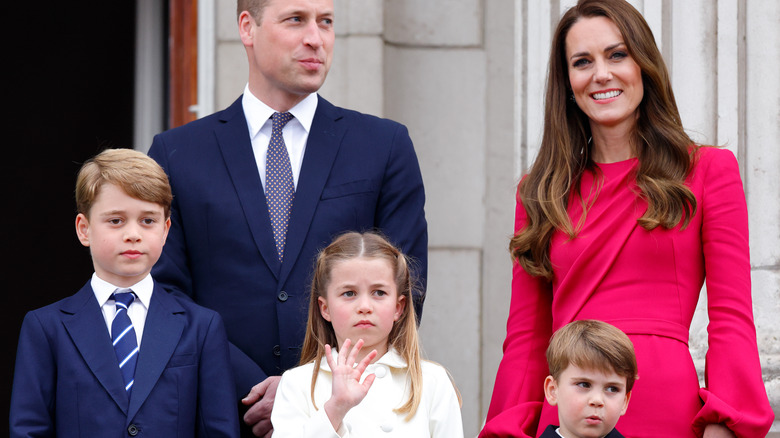11 Rules Royals Will Have To Follow At King Charles' Coronation
For many, King Charles III's coronation will be the first they witness during their lifetime. Queen Elizabeth II, who was the reigning monarch for 70 years, was crowned in 1953 during a lavish ceremony. Her coronation was attended by more than 8,000 guests (the palace had to build extra seats to accommodate everyone), and her procession consisted of 16,000 participants.
Now, the queen's son, Charles, is set to officially ascend the throne on May 6, 2023, and excitement is steadily building. It appears that the new king will honor royal tradition but also cultivate a more modern approach, so we can expect to see a few changes to some of the traditional protocols. "As previously announced, the Service will reflect the Monarch's role today and look towards the future, while being rooted in longstanding traditions and pageantry," a statement on the royal website reads.
Charles' coronation event is expected to be a lot smaller than his mother's. It's estimated that there will only be about 2,200 guests (which is the maximum capacity at Westminster Abbey where the coronation will take place), which will consist of royals from other corners of the world, the British prime minister, heads of state, and representatives from the Houses of Parliament. The procession will likely be much smaller as well. Since this is the first royal coronation in nearly a century, it's worth brushing up on the rules the royal family will have to follow on the day.
Prince William is expected to help with the coronation arrangements
When you're next in line to the throne, you can expect to have your hands full with the preceding king's coronation ceremony arrangements, and Prince William is expected to play a very active role in the planning of King Charles III's coronation ceremony.
It is said that the Prince of Wales will be required to join the king's coronation committee. His primary role would be that of advisor, and it's his responsibility to ensure everything goes off without a hitch in terms of the image that will be projected to the world. This coronation ceremony will serve as a means to showcase Britain on a global scale (we know everyone will be tuning in to watch this historic event), and the prince will need to ensure that there are no archaic, feudal, or imperial moments that will reflect badly on the country. Phew! That's quite the job, but we bet he can pull it off without breaking a sweat.
Prince William will have to follow a few protocols during the coronation
Apart from his role as advisor on King Charles III's coronation committee, Prince William will also have to follow a few traditional royal rules and protocols during the coronation ceremony itself.
First of all, Prince William has to be in attendance, since he is next in line to the throne, but he won't just be a spectator. Historian and author Dr. Tessa Dunlop told the Mirror that, per royal protocol, William will be required to honor his father during the ceremony while the rest of the world watches. The Prince of Wales will kneel before the new king and pledge his allegiance during the coronation. Then, he will touch King Charles' crown and kiss him on his right cheek.
Dr. George Gross, Visiting Research Fellow in Theology at King's College London, told Express that spectators can expect to see William taking on a pretty prominent role during the event, but that it's also new territory for the royals since "there wasn't always a Prince of Wales at the time of the coronation." Gross says William will likely have an honorable spot in the procession and will be given a special seat at the ceremony.
Princess Catherine will wear a coronet
This might not be a super strict rule, but per Express, style expert Rosie Harte is saying that the immediate family of the monarch typically wears a coronet at the coronation ceremony.
"Members of the Royal Family and members of the titled nobility such as Dukes and Duchesses will also get to wear them and the design of the coronet varies based on your rank and your relationship to the monarch," Harte explains. So, what makes a coronet different from a crown? Harte says they're notably smaller. Since Princess Catherine is set to be the next queen consort, it's very likely she will adhere to this royal tradition. Harte adds that Prince William will likely wear a coronet as well (via Town & Country).
The wearing of a coronet at the coronation ceremony is a long-standing royal tradition — when King George VI was crowned king in 1936, Princess Margaret and future queen Elizabeth both wore coronets as well. We're really curious to see what the Princess of Wales decides to wear when the time comes.
Prince George might be expected to take on a new role
Princess Catherine and Prince William's eldest child, Prince George, is now second in line to the throne, and therefore there is an expectation that he will be taking on some kind of role during the coronation ceremony. At only nine years old, this can probably feel like a lot of pressure.
The Independent reports that, because Prince George is set to succeed his father as king one day, there have been whispers that he might be part of the congregation at the coronation ceremony. Because he is still incredibly young, Catherine and William are still undecided on whether or not they want him to be included in this capacity, per The Telegraph. The event will attract global media and public attention and place the young prince smack in the middle of it all, and his parents are understandably concerned about the effect all the attention might have on him at this young age.
Past coronation ceremonies, like that of King George VI in 1937 and Queen Elizabeth II's in 1953 both saw young heirs to the throne form part of the congregation. Elizabeth was 11 at George's coronation, while Charles was four years old when his mother ascended the throne. Prince George's young age likely won't automatically excuse him from following in their footsteps. Times have changed, however, so whether or not his parents will follow through with this tradition remains to be seen.
Princess Charlotte and Prince Louis are expected to be respectful spectators
While their older sibling might be expected to join the congregation at the coronation ceremony, Princess Charlotte and Prince Louis can rest easy when it comes to royal expectations.
Aside from being dressed in their best, these two royal siblings, who are third and fourth in line to the throne, respectively, will only need to quietly observe the proceedings. All eyes will be on them, so they'll be under extra pressure to be on their best behavior (any of us who remember sitting through a grown-up event as young kids know this is much easier said than done).
Speaking to the Mirror, author and historian Dr. Tessa Dunlop explained that the outfits Catherine's children wear to the ceremony are pretty important too. "Expect Charlotte in a dainty coronet [small crown] — perhaps even the one the late queen wore to her father's coronation aged 10 – and the two brothers in frock coats and breeches."
The Queen Consort typically wears royal robes and a special ring
A key part of coronation ceremonies for centuries, traditional royal robes are a given when a new monarch ascends the throne. These robes have been around since King George II was crowned in 1727. They consist of a very long train and is made of ermine fur, rich velvet, and lined with gold lace. Tradition dictates that royal robes are worn by both the king and the queen consort during the coronation ceremony. There are whispers, however, that King Charles III won't be wearing traditional royal robes. It remains to be seen whether his wife Camilla will follow in the footsteps of her predecessors and wear royal robes, or whether she'll opt for a more modern outfit like her husband.
Aside from their lavish outfits, the monarch and queen consort are also adorned with special rings during the coronation ceremony. These rings are typically placed on their fourth finger, signifying that the king and the queen consort are "married" to the people they serve. The ring that will likely be presented to Camilla dates back to 1831 and was first made for Queen Adelaide, who was William IV's wife. The ring became a traditional part of the ceremony when Edward VII was crowned in 1902, and queen consorts have worn it ever since. The ring consists of a giant ruby set in gold, lined with fourteen small brilliants. The band is also embedded with fourteen rubies. It's quite the statement piece indeed.
The queen consort is crowned alongside the king in a simpler ceremony
Because the royal throne can only be inherited, Camilla, Queen Consort, won't become a monarch when King Charles III is crowned. She will, however, take part in the coronation ceremony to be officially crowned as queen consort — or perhaps, even queen, the Independent reports.
We're all aware that Charles' coronation will be a big deal, and Buckingham Palace confirmed that both Camilla and Charles will be crowned at the ceremony. "Unless decided otherwise, a queen consort is crowned with the king, in a similar but simpler ceremony," a royal statement reads. "If the new Sovereign is a queen, her consort is not crowned or anointed at the coronation ceremony." Luckily for Camilla, it means that she gets to be part of the ceremony and see her husband ascend the throne. After the coronation ceremony, Camilla will be required to join Charles for the coronation procession with other members of the royal family as they make their way back to the palace.
While Camilla is no stranger to the demands of royal life, the spotlight will be on her now more than ever. It appears her duties will remain pretty much the same, and will include providing moral support and companionship to the new king as he takes on this new demanding role. Given the fact that they've been married for 18 years, this power couple is likely ready for the challenge.
Camilla has to sit under a canopy while being anointed with holy oil
As a rule, the queen consort (and the king) are anointed with holy oil during the coronation ceremony. The royal website announced that for King Charles III's coronation, they acquired a very special type of holy oil. The olive oil that will be used at the coronation was produced from olive groves found on the Mount of Olives in Jerusalem. What's more is that this oil was produced outside Bethelem and then enriched with essential oils, including amber, orange blossom, rose, jasmine, sesame, neroli, cinnamon, and benzoin. The same formula for holy oil has been in use for centuries, making it very special indeed.
Camilla will be anointed with this oil by the Archbishop of Canterbury while seated under a canopy. Traditionally, the canopy is held over the queen consort by duchesses of the royal family. This is a very special and sacred part of the coronation ceremony. Cosmopolitan reports that Camilla has apparently requested that her grandchildren (who hail from the Parker-Bowles side of the family) hold the canopy over her instead. This will break with tradition, but it also makes sense that the queen consort would want her grandchildren to be part of this sacred moment. Whether or not they will follow through with this version of the plan remains to be seen.
Prince Harry and Meghan Markle aren't expected to follow any rules
There has been a lot of speculation about whether or not Meghan Markle and Prince Harry will be attending King Charles III's coronation, but if they do, what royal rules will they be subjected to? The answer is not any at all, really. If Harry and Meghan decide to attend, they will likely be spectators. Harry won't have to be a part of the ceremony in any formal capacity like his brother, Prince William, and he won't have to follow a strict dress code.
Speaking to the Mirror, historian and author Dr. Tessa Dunlop explained that Harry won't be expected to wear a coronet or a robe, and he likely won't have to go down on one knee to honor the new king. Dunlop adds that Meghan also won't be subjected to a specific dress code or accessories. "[A]ny coronation finery will be entirely her own," Dunlop says. Express reports that style expert Rosie Harte says it will be acceptable for Harry and Meghan to wear coronets to the ceremony because they are the king's immediate family. "Harry, Meghan, and Kate as the son and daughters-in-law of the monarch will get to wear this coronet featuring crosses and fleur de lis [a lily flower decoration]." Again, since they are no longer working royals, Meghan and Harry are likely free to decide whether or not they want to opt for this traditional royal accessory.
Working royals are expected to appear on the balcony after the coronation
Whenever the royal family celebrates a big event, you can expect them to make an appearance on the famous palace balcony. It's a long-standing tradition, one that the public and media always look forward to. Since King Charles III's coronation will be the event of the year, there will definitely be a balcony appearance — and it will be extra special since it will mark Charles' first official public appearance as the new monarch.
Following the coronation procession, royal family members are typically expected to join the new king and queen consort on the balcony for a moment of celebration. It's not yet clear if only working royals will be expected to attend. At Queen Elizabeth II's last Platinum Jubilee in 2022, only working royals were expected to make a balcony appearance. This might very well be the case once again, but Charles might make an exception. Prince William and Princess Catherine along with their children will definitely be there, and historian and author Dr. Tessa Dunlops speculate that we can expect to see Prince Edward and Sophie, Countess of Wessex as well as Princess Anne join the new king. It is unlikely that Harry and Meghan will be expected to make an appearance, Dunlop told the Mirror. As for the other members of the royal family, we'll have to wait and see.
